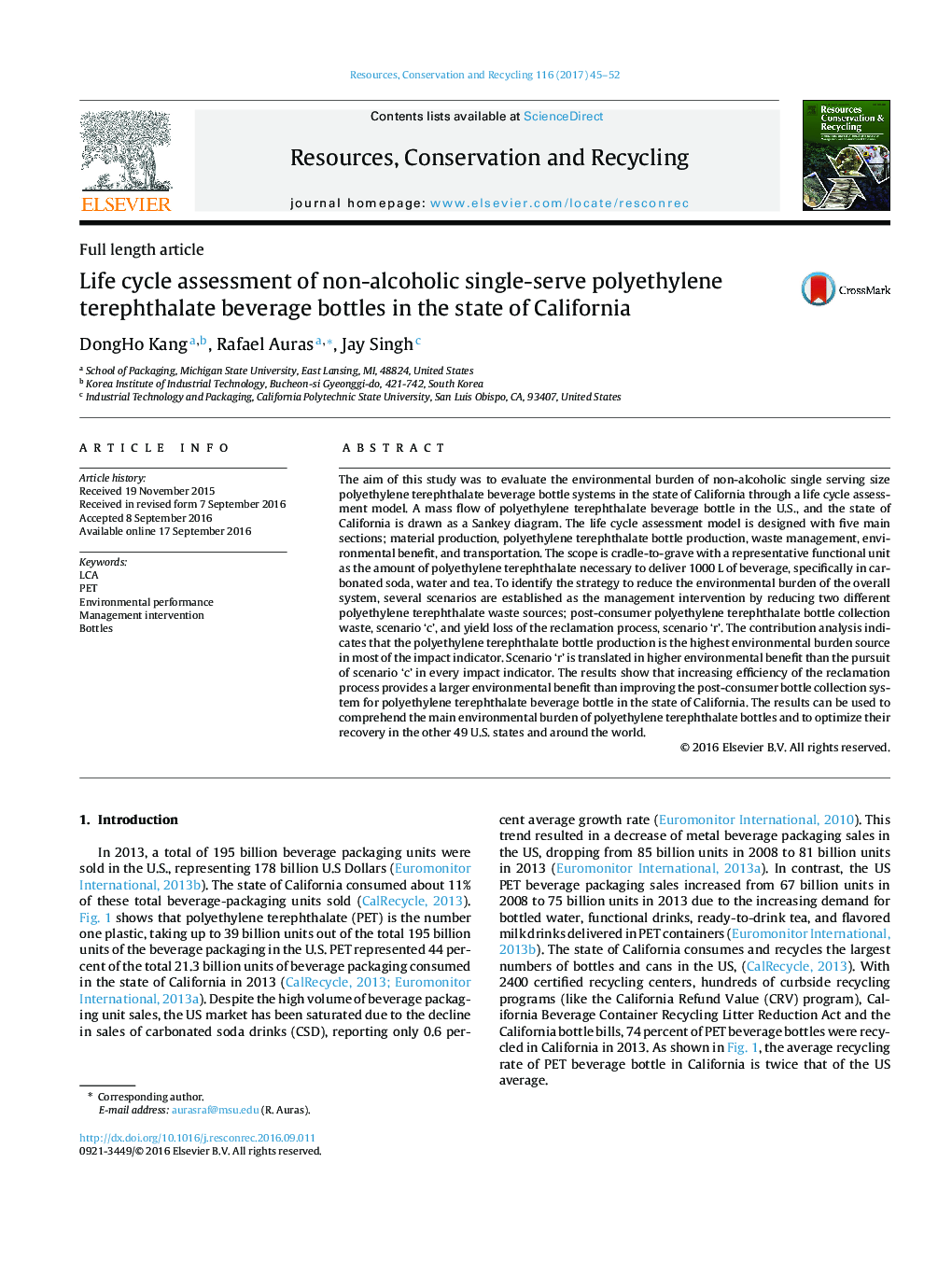| کد مقاله | کد نشریه | سال انتشار | مقاله انگلیسی | نسخه تمام متن |
|---|---|---|---|---|
| 5118754 | 1485675 | 2017 | 8 صفحه PDF | دانلود رایگان |
- Life cycle assessment of single serve PET beverage bottle.
- Material flow analysis of PET in the U.S. and California.
- Contribution analysis of the life cycle stage environmental burden of PET bottles.
- Effect of recyclable PET on the environmental burden of PET bottles.
- Environmental burden reduction strategies for PET beverage bottles.
The aim of this study was to evaluate the environmental burden of non-alcoholic single serving size polyethylene terephthalate beverage bottle systems in the state of California through a life cycle assessment model. A mass flow of polyethylene terephthalate beverage bottle in the U.S., and the state of California is drawn as a Sankey diagram. The life cycle assessment model is designed with five main sections; material production, polyethylene terephthalate bottle production, waste management, environmental benefit, and transportation. The scope is cradle-to-grave with a representative functional unit as the amount of polyethylene terephthalate necessary to deliver 1000Â L of beverage, specifically in carbonated soda, water and tea. To identify the strategy to reduce the environmental burden of the overall system, several scenarios are established as the management intervention by reducing two different polyethylene terephthalate waste sources; post-consumer polyethylene terephthalate bottle collection waste, scenario 'c', and yield loss of the reclamation process, scenario 'r'. The contribution analysis indicates that the polyethylene terephthalate bottle production is the highest environmental burden source in most of the impact indicator. Scenario 'r' is translated in higher environmental benefit than the pursuit of scenario 'c' in every impact indicator. The results show that increasing efficiency of the reclamation process provides a larger environmental benefit than improving the post-consumer bottle collection system for polyethylene terephthalate beverage bottle in the state of California. The results can be used to comprehend the main environmental burden of polyethylene terephthalate bottles and to optimize their recovery in the other 49 U.S. states and around the world.
Figure Sankey diagram of PET beverage bottle system for U.S and California in 2010; the width of arrow was proportional to the PET mass (billion tons); red and black dot line indicates the California state and US boundary, respectively.176
Journal: Resources, Conservation and Recycling - Volume 116, January 2017, Pages 45-52
